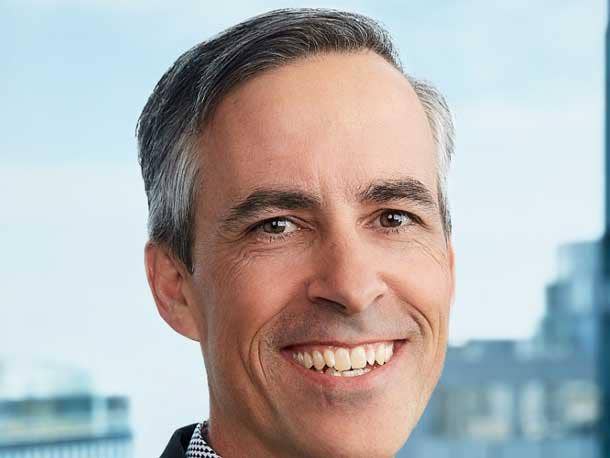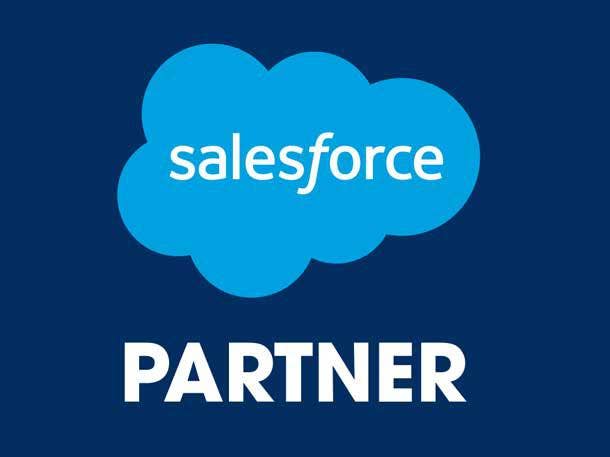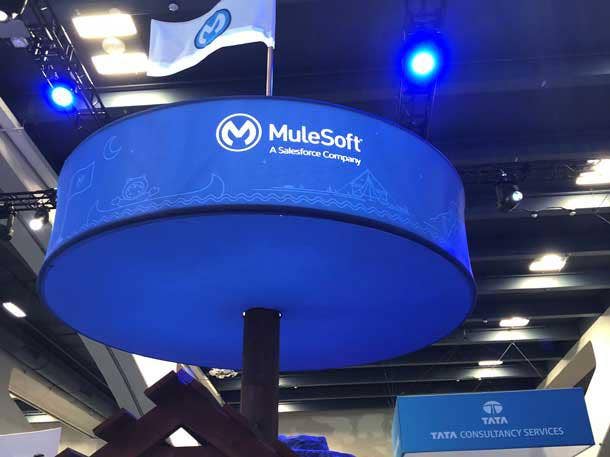MuleSoft Channel Chief McAllister: Joining Us With Tableau, Salesforce Programs ‘Great For The Partners’
‘The real benefit is the ability to understand how all of the (Salesforce Customer) 360 products work together,’ MuleSoft channel chief Dan McAllister says.

A combined partner program for Salesforce and its subsidiaries Tableau and MuleSoft will give partners one contract and one partner portal to work with as opposed to multiple while also simplifying how partners with one subsidiary can expand practices in other areas of Salesforce, MuleSoft channel chief Dan McAllister told CRN in an interview.
McAllister – whose formal title is senior vice president of global alliances and channels – said that the combined partner program has been widely requested by partners. Although San Francisco-based Salesforce has been taking steps to bring in the partner programs of data analytics subsidiary Tableau and integration subsidiary MuleSoft throughout the year, the combined partner program will roll out to partners starting Feb. 1.
“The real benefit is the ability to understand how all of the (Salesforce Customer) 360 products work together,” McAllister said. “In almost every meeting I’m in with our integration partners, in particular, they’re thinking about it in terms of business solutions to the customer.”
[RELATED: Salesforce Cuts Guidance, Reports ‘Measured’ Customer Buying Amid Economic Uncertainty]
What is a MuleSoft partner?
The combined partner program will still be led by Salesforce channel chief Tyler Prince. And although the MuleSoft partner employees will still have McAllister at the helm and Slack still has channel chief Richard Hasslacher, Tableau channel chief Julie Bennani departed the company in October.
While partners and customers should benefit from a combined program, Salesfroce itself will have more data available on partner success and specialties, McAllister said.
“We also capture information on them (partners) and how they’re performing, where their skill sets are, what unique IP (intellectual property) they have, what credentials they’ve built over the years,” he said. “And for them promoting into us and for our own internal people understanding the relationship – that’s now all in one place. So it’s efficient for them. It’s efficient for us.”
Here’s what else McAllister had to say.

Is the combining of these partner programs an opportunity for the entire Salesforce ecosystem?
Yeah. It really is. It’s not just Mule(Soft) and Tableau because, first of all, there’s a lot of overlap between the partners that work with one or all … And they’ve been asking for a greater synergy and efficiency between us.
The Salesforce partners who are onboarding to MuleSoft or Tableau, or vice versa, were all saying the same thing, that they’re looking for this unification of the programs.
And I think it’s great for a number of reasons. No. 1, great for the partners from a simple efficiency standpoint. One contract instead of multiple. One partner portal instead of multiple. A common look and feel in said portal and how they view their credentials, their capabilities, etcetera.
But then also how they promote themselves into the organization. So we also capture information on them and how they’re performing, where their skill sets are, what unique IP (intellectual property) they have, what credentials they’ve built over the years.
And for them promoting into us and for our own internal people understanding the relationship – that’s now all in one place. So it’s efficient for them. It’s efficient for us.
And, by the way, our customers also benefit because all of those things are relative to the community as well – how they view the ecosystem when they’re looking for support around Mule, Tableau, Salesforce, core products, etcetera.
This is just going to make everyone’s lives a whole lot easier and more enjoyable.

What’s the timeline for the changes?
We’re going to start communicating out to partners (this) week some of the components of this.
But really, it will be Feb. 1 as a rollout. And so we’re going to give them plenty of lead time and understanding about what they can expect, what they should and shouldn’t do in the meantime.
There are some things that we’re going to make easier now because we can. Other things that we’ll wait for Feb. 1. So we’re going to try and release the capabilities and benefits as soon as possible. But Feb. 1 is when we’re looking for the grand rollout and continue to phase beyond that as we’re able to. … We’ve had operation teams supporting multiple programs.
And so part of the power of this is we’re going to take those operations teams for standing up three different programs and maintaining them, have them all work on – in this window of time between now and Feb. 1 – onboarding to one common framework.
And then they will have all this extra horsepower to actually improve it. So it’ll improve because it’s one instead of multiple, and then we’re actually going to add capabilities to it and more benefits to the organization and the three different parties – us, the customers and the partners – at the same time. … And all the things that maybe with best practices from one program to the next can be combined and then added to. So that to me is what’s really exciting.

What are some improvements you hope partners notice?
A few easy ones. One contract. So today, if … you want to begin working with MuleSoft, you’ve been working with Salesforce for multiple years, you actually have to sign a new MuleSoft contract. Same thing with Tableau.
So just think about the legal burden, the process, that’s never easy for us or for anybody. And so that just simply cuts down time and effort. So they should know that right away. … Others are enablement … so taking a common location and then framework for delivering enablement and scaling enablement is also going to be a huge benefit.
And implied in that is access to products. So provisioning of products will all be available in one place, in one program, under one contract. It becomes a lot easier.
And then the real benefit is the ability to understand how all of the (Salesforce Customer) 360 products work together. In almost every meeting I’m in with our integration partners, in particular, they’re thinking about it in terms of business solutions to the customer.
So (recently) we happened to be talking with a large new partner for all three companies, actually, that was thinking about a sustainability solution. Well, they have great access to their customer data. They don’t have a platform for delivering that – so enter MuleSoft.
They don’t have an application that would house it, manage it, craft the interface for their customers. Enter (Salesforce) CDP (Customer Data Platform). Enter Salesforce Sustainability Cloud.
And then they don’t have any ability to visualize all of that. OK, enter Tableau. before, that’s three different separate things that they would have to glue together and work with probably three different partner teams.
Now it’s all under one roof and they can understand all of that in one program. And we’ll be able to deliver that message to them in one place as well as opposed to – (It used to be that) I delivered the MuleSoft message and then we couple the rest of it in different areas or a little bit in each spot and hope it glues together correctly in their minds. We’ll be able to do that all at once.

Will any of this affect Salesforce’s partner navigator tool?
One of the many amazing things that I think Salesforce has done over the years is with their partner navigator tool. … We will now capture what’s meaningful to those ecosystems – because they are somewhat unique as well – inside the Salesforce model.
So you’ll enter navigator, you will have an overall partner score, but you will also be able to be viewed independently based on your particular area of product. So big integrators want to be judged on all those measures.
Others maybe not so much. Maybe they are a data integration specialist. Maybe they are business intelligence specialists… so you’ll be able to enter through one door but maybe be treated differently in each of the different rooms, if that’s appropriate to you.
You can be VIP over here, and maybe I’m just dipping my toe in the water over here. You’ll have the ability to be judged accurately and fairly across all different areas of business, which is important to how you show up to your customer base and then (for) customers as they want to discover which partners they want to work with and which are most appropriate for their business.
Makes it a lot easier for everybody. … Maybe you were not a name-brand partner in the global sense with Salesforce, but you really were in either a specific cloud of Salesforce or MuleSoft or Tableau.
You will be seen as such in that area when people are looking specifically for those skills. You may in the grand scheme of things have a few thousand consultants. And maybe that’s not going to show up on the map when you total everybody’s business together.
But when you narrow it down to that specific area, either by industry or by cloud, it’ll show up appropriately. So that’s an awesome way to think about how to bring the programs together, where you can have the opportunity to differentiate as a partner.

Should partners be concerned about less manpower with the programs coming together?
That will increase in terms of the program because now we’ll have more people essentially supporting less programs.
So we’re going to get efficiency, we’re going to get some familiarity, probably to get less questions because there’s not as many different things to think about.
They will benefit from more individuals having a multi-cloud, 360 perspective to help them with that instead of asking them to piece that together on their own.
But they’ll still have access to specializations. So an easy one to think about is delivery skills or training and enablement. Of course, we’ll still have very specific enablement around each of the product lines. We have to. They have to have those technical skills, and we will have the right support available for them.
But the real benefit for them is going to be more individuals with expertise on the interoperability of all the different solutions.

Outside of the integration with Tableau, what else is important for MuleSoft partners to know as we enter 2023?
My message is actually much the same as it has been all year in that we have a vast opportunity to leverage the Salesforce economy that we still have not fully tapped into yet. We have a lot of room to grow inside of that.
And so what I want them to do is continue to learn all of the things that … we’ve announced. We’ve announced lighter SKUs (Stock-keeping units) for customers. So in the past, MuleSoft as an enterprise product was priced accordingly and capability was such that not all companies would onboard us for every project.
Even big companies wouldn’t do that for small projects because my budget is set departmentally … Now we have ($)30K SKUs that we can deliver value.
Sometimes MuleSoft fell prey to AI (artificial intelligence). ‘I’m not in IT. Therefore, I’m gonna go for a more business-centric solution.’
We now have automation tools that are embedded within the Salesforce industry clouds. And so it’s another entry point.
And then also we have universal API (application programming interface) management. So the real common one is, ‘Well, I’ve already got integration tools, or my customer has integration tools.’
And now with the universal API management, you can manage, discover, and govern all of your previously built integrations, regardless of tool, as if they’re in the MuleSoft platform.
And so what I want the MuleSoft community to do is to keep leaning in and think about how we can more seamlessly align with the Salesforce selling motion and deliver value to Salesforce customers. Because that will only help them, it will help the customers, it will grow their practice.
And so we’re taking away some of the main objections we’ve seen in the market and making strategic shifts to make that easier for everyone to capitalize on.

Do you want to see more MuleSoft and Tableau partners?
We’re always recruiting and growing new partners. As the ecosystem shifts on its own, we’re always looking for – how can we reach customers, how can we continue to deliver value?
And that’s not something we can do on our own right. We’ve never had the breadth of several hundred thousand certified consultants and developers out in the market. ,,, We want them to exist in the community because of all the other experience that they gained from working in those organizations, either the business-level knowledge or the operational knowledge or functional knowledge that’s important to deliver these solutions.
So we want to grow. We want to keep going wide. But we do also want to go deep. The partners that we have and that we meet with, we’re always talking about how they grow their business. What kind of value can we bring to them? What do they need to deepen their skillset so they can deliver more value to their clients, they can deliver more to their own bottom line?
And so we create new capabilities. That’s easy. We create new products. CDP and Genie are a great example of that, about how they can take solutions and expand on them.
And then also, you know, what combinations of our solutions can they go to market with. What does that look like?
And then what innovation can they deliver back with us? Deepening in industry, deepening in functional knowledge as well is what we want to get.

Did the state of the economy speed up the integration of MuleSoft and Tableau’s partner programs?
It has been in play for a long time. And we’ve been doing some of it behind the scenes. And the timing was just great to formalize it.
I was acquired four-and-a-half years ago. We’re doing lots of things to get better in collaboration and sharing and best practices. And in the beginning of the year, as we transitioned from our last fiscal year to this – this is January, February timeframe – we decided it’s really time to take another step forward.
And we’ve been working on these ideas and these plans all year. And so now it’s time that we’ve got them in place. We can start formally executing on ones that we haven’t announced already.
If a recession comes, will it still be an important time for services-led partners?
Of course. The partners we work with are often the trusted advisors of our customers. And so it behooves us to make sure they’re educated, they understand, what our plans are, what our solutions offer and what value we can bring so that they can give the best advice possible to their customers.
And so, if they’re looked at to be thought leaders, we want to have them educated on exactly what we can provide so that they can deliver the best value for their customers.
The feedback I get from our partners is that they continue to be highly utilized. There’s tremendous demand. Maybe some of the focuses have shifted a bit from growth at all costs to sustainable growth to more efficiency.
But many of the value propositions that we have been founded on or been delivering to the market for the past decade have only become more relevant. So just in the MuleSoft story alone, 10 years ago, our message was API-led connectivity and a composable business to help your IT organization keep pace with the amount of change in the market.
But back then we were talking about, hey, move to cloud, SaaS (software-as-a-service), mobile, big data. Now, we’re talking about all those things, plus supply chain crises, pandemics, reaction to other changes in the market.
So it’s only compounded. And you marry that with the customer demand for great experiences – in the past, it was, ‘Wouldn’t it be great if we had this. We think we could attract more customers.’ Now it’s, ‘Hey, if we don’t deliver this experience, we’re going to lose customers. We’re gonna lose employees.’
Employees and customers don’t want to work with organizations or work for organizations that don’t deliver amazing tools and technology that facilitate the interaction. And so the demand has only gotten higher. … Customers are now looking for business lead solutions as opposed to technology for future’s sake.